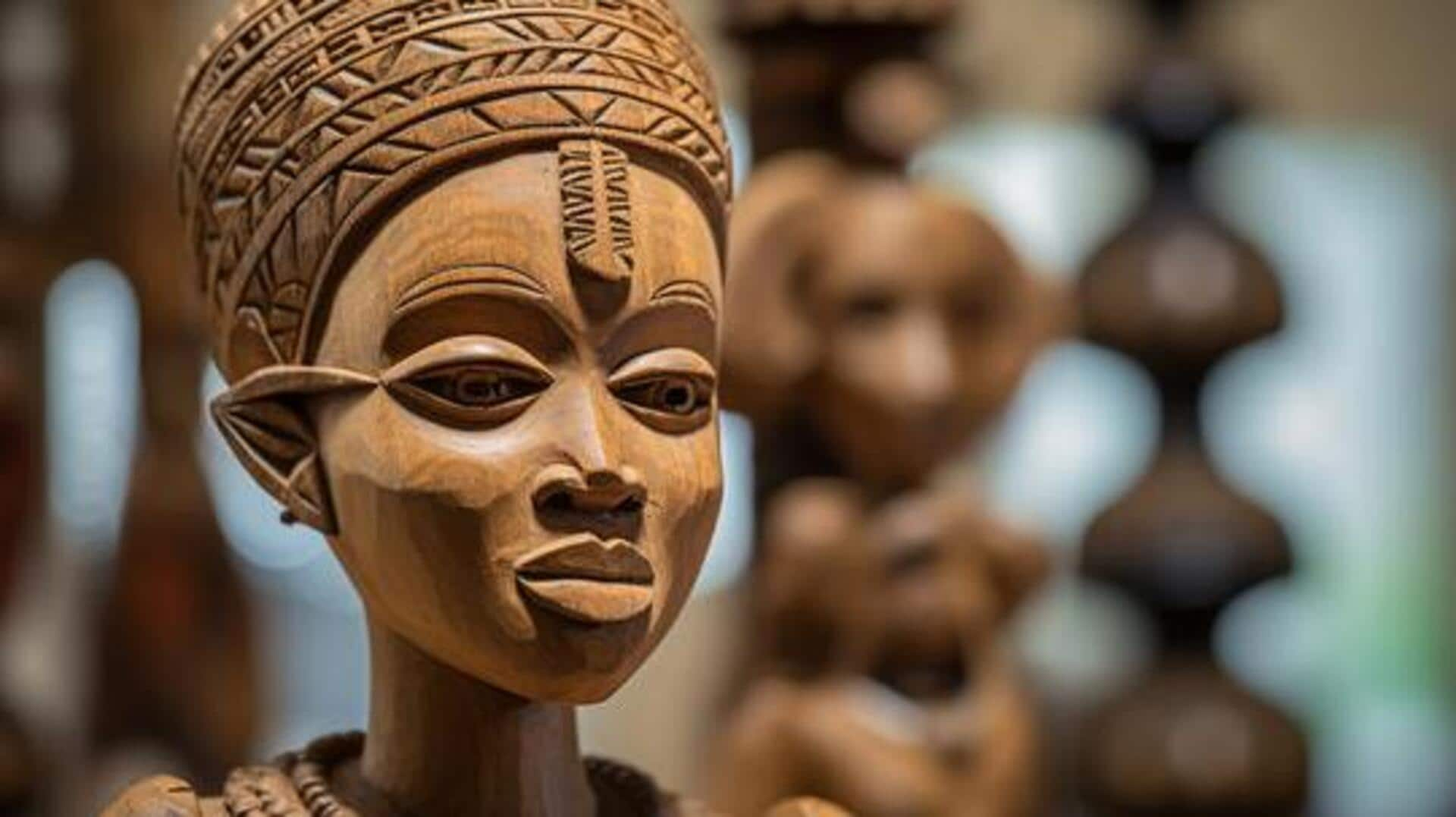
Pioneers of African sculpture and installations
What's the story
This article explores the influential work of African artists who have left their mark on sculpture and installation art. These pioneers have pushed the boundaries of these mediums while infusing themes that reflect Africa's rich cultural legacy, social realities, and contemporary life. Their contributions have been instrumental in shaping and redefining the global art landscape, influencing countless artists, movements, and cultural shifts around the world.
Transformation
El Anatsui's transformative artworks
El Anatsui, a Ghanaian sculptor, has gained international acclaim for his large-scale sculptures created from thousands of discarded metal pieces retrieved from liquor bottles. His works, while breathtakingly beautiful, also serve as poignant commentaries on global trade, consumption, and waste. Anatsui's groundbreaking use of materials has challenged and redefined traditional concepts of sculpture and installation art, solidifying his status as a pioneering force in contemporary African art.
Narration
Sokari Douglas Camp's steel narratives
Nigerian artist Sokari Douglas Camp crafts life-sized steel sculptures that delve into her homeland's cultural traditions, environmental concerns, and social justice issues. Her work is characterized by intricate detailing and the transformation of metal into a medium for powerful narratives. Douglas Camp's sculptures connect traditional African artistry with contemporary narratives.
Ecology
Nnenna Okore's eco-conscious creations
Nnenna Okore, an artist born in Australia and raised in Nigeria, transforms recycled materials into intricate installations that beautifully mimic natural processes and textures. Her art serves as a meditation on decay, regeneration, and the cyclical beauty of nature. Okore's eco-conscious approach does more than highlight environmental concerns; it shows the untapped potential of sustainable art practices. This is a powerful lesson in conservation meets creativity.
Hybridity
Yinka Shonibare's cultural hybridity
British-Nigerian artist Yinka Shonibare MBE explores cultural identity, colonialism, and post-colonialism within the context of globalization through sculpture, painting, photography, and film installations. His trademark use of Dutch wax-printed fabrics serves as a symbol of cultural hybridity and a tool for critiquing historical narratives. Shonibare's work encourages a reassessment of culture and identity, pushing viewers to look past traditional limitations.
Feminism
Wangechi Mutu's feminist interventions
Kenyan-American artist Wangechi Mutu is renowned for her innovative fusion of sculpture and painting to address themes of gender, race, war, and colonialism from a distinctly feminist perspective. Her works, characterized by hybrid female figures that combine human, animal, and machine elements, serve as powerful critiques of historical objectification and dehumanization of women. At the same time, they envision new identities that transcend traditional limitations.